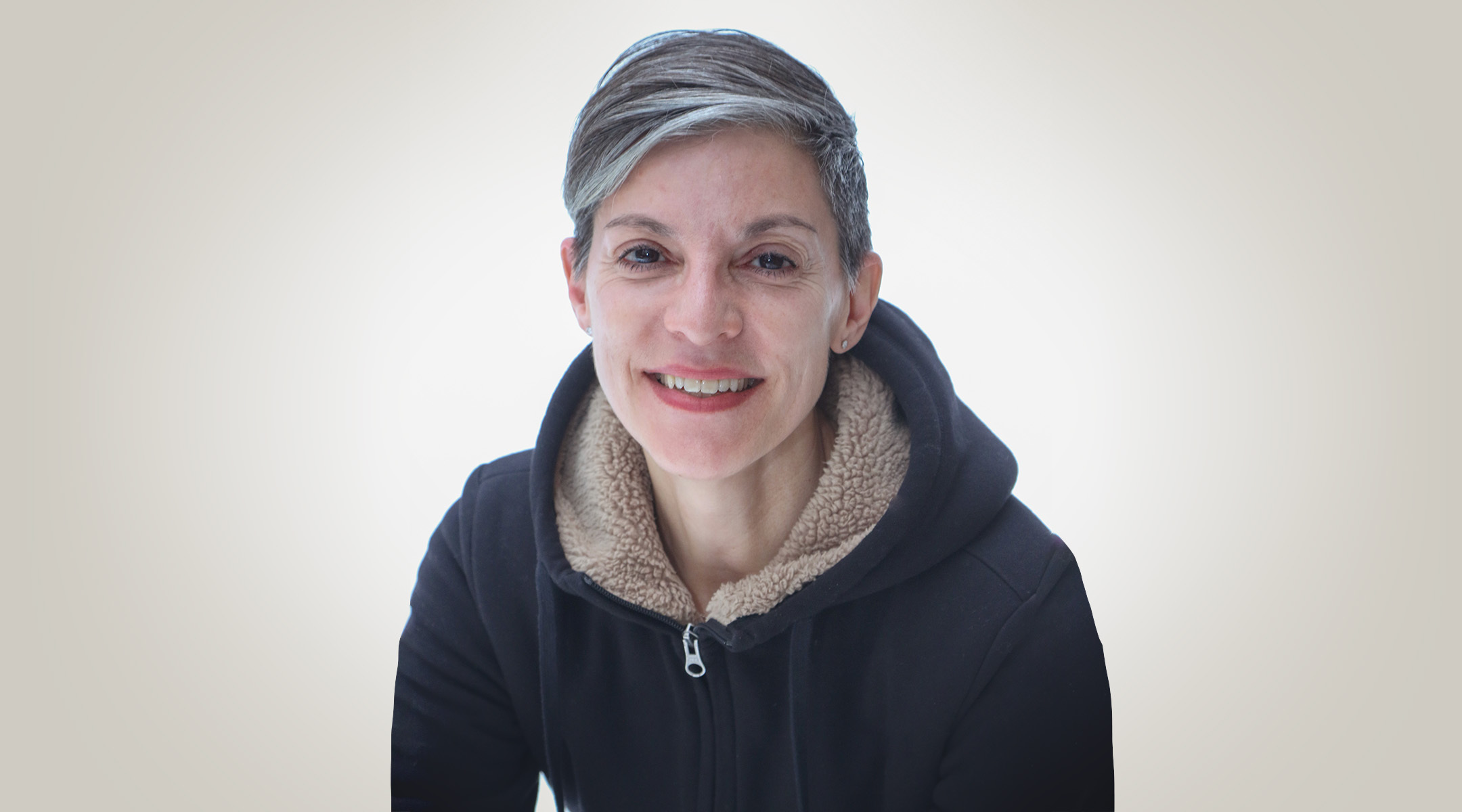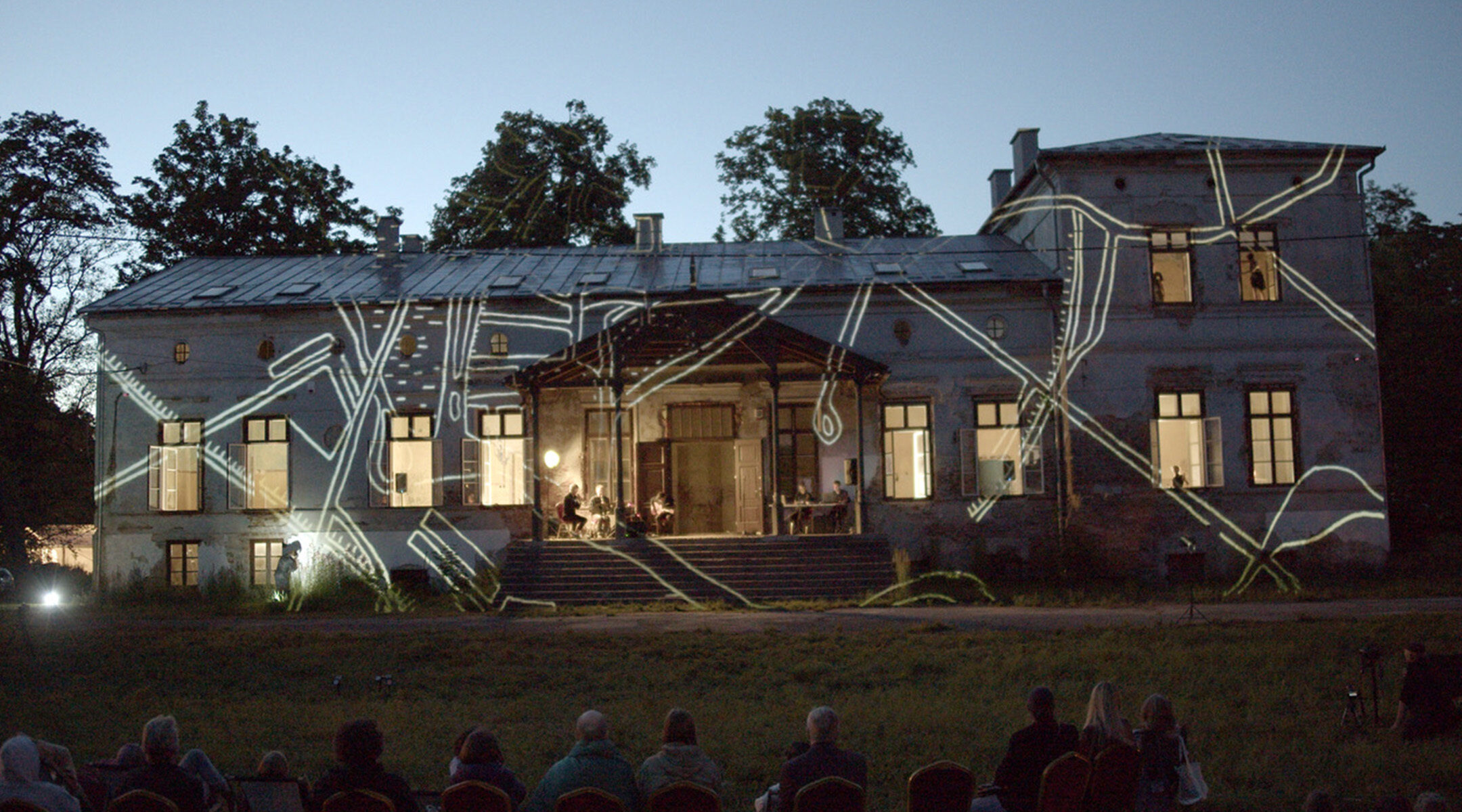(New York Jewish Week) — What happens to the places that are no more? To the people who have died? To the events that meant so much but cannot ever reoccur? Is there a way to bring the intangible power of vanished spaces into the physical world?
On Friday, May 19, dancers, musicians, orators and spectators will come together for a performance of “Site: Yizkor” at King Manor Museum in Jamaica, Queens to explore these and other questions.
The brainchild of multimedia artist Maya Ciarrocchi and composer Andrew Conklin, the performance takes its name from the Jewish memorial service that is recited on major holidays. It combines live and pre-recorded readings with improvised music and dance, encouraging the performers and audience to summon their loved ones into the room, to commune with them in an intimate and visceral way.
“It’s about trying to make roots in a place, to map it, and also to honor the dead and the ghosts — not just the ghosts of people, but the layers of buried history, too,” Ciarrocchi told the New York Jewish Week. “It’s like, if you go to a small chapel in Italy and then realize it’s on three layers of pagan temples [and other] sacred sites.”
Ciarrocchi, who is of Ashkenazi Jewish and Italian descent, has long contemplated the spaces her own family lost and how that loss has impacted her lived experience as a queer Gen X New Yorker. “My grandparents were immigrants who tried to establish a home in the new world. My mother has had difficulties finding a place [within the] establishment,” she said. “Plus, growing up on the tail end of the AIDS plague, I really didn’t have any queer mentors. It did create an unmooring, a feeling of being ungrounded.”

Multimedia artist Maya Ciarrocchi. (Joanna Eldredge Morrissey)
The impetus for this specific piece was a confluence of events — people and places disappearing while remaining present in Ciarrocchi’s consciousness. In 2015, she lost both her mother-in-law and an elderly neighbor, the 1930s radio star Elia Braca Rose (aka Lynne Howard). “I was thinking a lot [during that time] about the things we leave behind,” said Ciarrocchi. “Especially as I witnessed my neighbor’s apartment [getting] dismantled. I was grieving. Her children took things, the neighbors gathered things, the [demolition] team came in. There was something so devastating about all her history being sucked out of the apartment.”
She and her wife moved a year later, emptying out the apartment she had been raised in, a space in the Westbeth artist’s community. All this upheaval summoned grief and thoughts of the power of rites and ritual.
Yizkor, which means “may [God] remember” in Hebrew, is traditionally performed four times a year — on the three pilgrimage holidays of Shemini Atzeret, Passover and Shavuot, and on Yom Kippur. The communal Yizkor service includes a moment of private reflection during which worshipers can read a prayer that includes the name of a lost loved one and their relationship to the person praying.
“This particular viewpoint is inherently Jewish, but it’s a universal experience of displacement, loss, grief,” Ciarrocchi said. “Really, we’re doing a ritual together. And it doesn’t matter who you are or where you come from; we’re doing this together. Hopefully it brings everyone in, and we can have feelings together. The best way to connect with people is to have conversations with them, to open up space for people to hear each other. I hope that this project can do that.”
Each performance is site specific: Previously, “Site: Yizkor” has been performed at the Chutzpah! Festival in Vancouver and at the Roza Centre for International Art and Cooperation in Ruszcza, Poland, a short distance from where Ciarrocchi’s grandmother’s house was burned to the ground during a pogrom.
For the New York iteration, the artist has created a series of videos incorporating drawings and maps specific to King Manor Museum, the former country estate of Rufus King, a 19th-century politician and early abolitionist. The museum says its mission is to highlight King’s antislavery activism and to “promote social change in today’s world.”
“Site: Yizkor” began taking its latest form a few weeks ago with a writing workshop, viewed by the artists as integral to the creative process. Participants were invited to respond to prompts such as “describe a vanished place of personal importance” and “describe your dreams of the future.” The artists then take these reflections and incorporate them into the performance.
The music, born of Conklin’s extensive work in the worlds of folk, bluegrass and traditional music, is improvised live from a graphic score. Similarly, the choreography contains specific modules and instructions but remains open to the interpretation of the performers.
“We come up with a score together but it’s a really open structure,” Ciarrocchi said. “An element of a score for dancers might be to ‘walk the periphery of the house connecting with each other.’ You can do a lot of things inside of that, but that is the structure. Because these are skilled improvisers, they’re going to make that happen.”
“This particular viewpoint is inherently Jewish, but it’s a universal experience of displacement, loss, grief,” Ciarrocchi said of the piece. “Really, we’re doing a ritual together.”
“Site: Yizkor” will take place at King Manor (150-03 Jamaica Ave.) in Jamaica, Queens on Friday, May 19 at 8:00 p.m. Register here.
The New York Jewish Week brings you the stories behind the headlines, keeping you connected to Jewish life in New York. Help sustain the reporting you trust by donating today.





